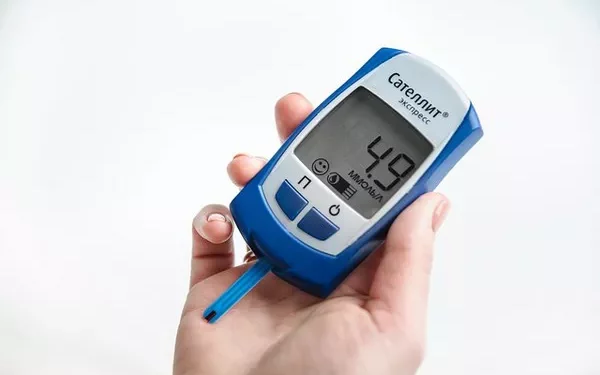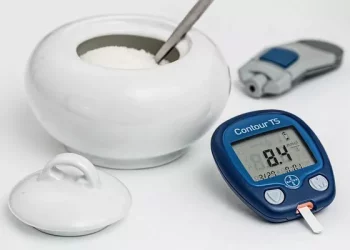Diabetes is a chronic condition where the body either cannot produce enough insulin or cannot effectively use the insulin it produces. Insulin is a hormone that helps regulate blood sugar (glucose) levels. If left unchecked, blood sugar levels can fluctuate dramatically, leading to serious health complications, including cardiovascular disease, nerve damage, kidney failure, and even blindness.
For people living with diabetes, managing blood sugar levels is essential for maintaining overall health. One of the most important steps in managing diabetes is regular blood sugar monitoring. This article will explore the different methods of measuring blood sugar levels, their accuracy, and how best to incorporate blood sugar monitoring into diabetes management plans.
Why Monitoring Blood Sugar Levels Is Crucial
Blood sugar levels directly impact the body’s metabolism. In diabetes, either insufficient insulin production (type 1) or insulin resistance (type 2) causes blood sugar levels to rise. Over time, if these levels remain high or low for extended periods, they can result in acute complications, such as hypoglycemia (low blood sugar) or hyperglycemia (high blood sugar), and long-term complications that can impact quality of life.
Routine blood sugar testing is crucial because it helps:
Prevent extreme fluctuations: Regular testing provides immediate feedback on how food, exercise, medications, and lifestyle choices impact blood sugar levels.
Guide treatment decisions: Monitoring blood sugar allows healthcare providers to make timely adjustments to medications or insulin dosages, ensuring better control of the condition.
Identify patterns: People with diabetes can track trends in their blood sugar levels, enabling them to make lifestyle modifications to avoid extreme levels and maintain healthier control.
The Different Methods of Blood Sugar Monitoring
There are several methods of monitoring blood sugar, each with distinct advantages and considerations. These methods range from traditional fingerstick tests to advanced continuous glucose monitoring (CGM) systems. Let’s explore the most common approaches used in diabetes management.
1. Self-Monitoring of Blood Glucose (SMBG)
What It Is:
Self-monitoring of blood glucose (SMBG) is the most common method for testing blood sugar. It involves using a glucose meter (glucometer) to check the level of glucose in the blood. This method requires the individual to prick their finger with a small needle (lancet) to obtain a blood sample. The sample is then placed on a test strip that is inserted into the meter. The meter reads the blood sample and displays the blood sugar level.
How It’s Done:
Wash your hands with soap and water to prevent any contaminants from affecting the test.
Prepare your glucometer by ensuring it has fresh test strips and a working battery.
Use the lancet to prick the side of your fingertip, as this is less painful than pricking the pad of the finger.
Place the blood sample on the test strip as directed by the manufacturer.
Wait for the result: The glucometer will display your blood sugar level, typically within a few seconds.
Advantages:
Convenience: SMBG is portable, affordable, and easy to perform at home or on the go.
Quick results: Results are typically available in less than a minute, providing immediate feedback.
Personal control: Individuals with diabetes can test multiple times a day, depending on their doctor’s recommendations.
Disadvantages:
Pain: Fingerstick tests can be uncomfortable, and frequent testing may cause irritation or calluses.
Limited data: SMBG only provides a snapshot of your blood sugar at one specific moment in time and may not capture fluctuations throughout the day.
Human error: Results can be affected by user error, improper technique, or faulty equipment.
2. Continuous Glucose Monitoring (CGM)
What It Is:
Continuous glucose monitoring (CGM) is an advanced method of tracking blood sugar levels. CGMs measure glucose levels in real-time throughout the day and night, providing ongoing data about how glucose levels fluctuate. A small sensor is placed under the skin, typically on the abdomen or upper arm, and continuously measures glucose in the interstitial fluid (the fluid surrounding cells).
How It’s Done:
A healthcare provider or trained technician inserts the CGM sensor under the skin using a small needle.
The sensor measures glucose levels in real-time and sends data to a receiver or smartphone app.
The system continuously records blood glucose levels, and the data can be viewed in real-time, along with trends and graphs.
Advantages:
Continuous data: CGMs provide real-time glucose readings, helping to identify trends and fluctuations that SMBG may miss.
Alerts: Many CGMs have alarms that warn users when blood sugar is too high or too low.
Less frequent fingersticks: CGM systems require fewer fingerstick tests, although some systems may still require occasional calibration.
Disadvantages:
Cost: CGMs are more expensive than traditional glucometers, and not all insurance plans cover the cost.
Maintenance: The sensors need to be replaced periodically, which adds to the overall cost.
Accuracy: While CGMs provide valuable data, they may not be as accurate as fingerstick tests, especially during rapid changes in blood sugar.
3. A1C Testing (Glycated Hemoglobin Test)
What It Is:
The A1C test is a blood test that provides an average of your blood glucose levels over the past two to three months. It measures the percentage of hemoglobin (the protein in red blood cells that carries oxygen) that is coated with glucose. This test is typically performed in a healthcare setting, although at-home A1C testing kits are also available.
How It’s Done:
A blood sample is drawn from your arm.
The sample is sent to a laboratory for analysis, where it is tested for the percentage of glycated hemoglobin.
Advantages:
Long-term view: A1C testing offers a broader picture of blood sugar control, as it reflects the average level of glucose over a longer period.
No fasting required: The A1C test can be done at any time of the day, regardless of food intake.
Infrequent: The A1C test is typically done only every 3-6 months, making it less disruptive than daily blood sugar testing.
Disadvantages:
Not real-time: A1C testing cannot provide immediate data about current blood sugar levels.
Delayed feedback: Since it measures long-term control, A1C testing cannot help in making immediate adjustments to insulin or lifestyle changes.
Affected by certain conditions: Factors such as anemia, pregnancy, and kidney disease can influence A1C results, leading to inaccurate readings.
4. Flash Glucose Monitoring (FGM)
What It Is:
Flash glucose monitoring (FGM) is similar to CGM but with a major difference: the device does not continuously send data. Instead, users must scan the sensor with a reader or smartphone to check their glucose levels. FGM sensors are worn on the skin, like CGM sensors, but they do not transmit data automatically.
How It’s Done:
The FGM sensor is worn on the skin, usually for up to 14 days.
The user scans the sensor with a reader or smartphone to get a real-time reading of their glucose level.
Data is stored for later review, and users can track trends over time.
Advantages:
Convenient: Users can check their blood sugar levels easily by scanning the sensor without the need for a fingerstick.
Less invasive: Since it doesn’t require constant calibration or fingerstick testing, it’s less invasive than traditional SMBG or CGM systems.
Affordable: Flash glucose monitoring systems are generally more affordable than CGMs, making them a viable option for many people with diabetes.
Disadvantages:
Manual scanning: Unlike CGMs, FGM does not provide continuous data or real-time alerts for high or low blood sugar.
Accuracy: Flash glucose monitors can be less accurate than CGMs, particularly during periods of rapid changes in glucose levels.
When and How Often Should You Measure Your Blood Sugar?
The frequency and timing of blood sugar monitoring depend on individual needs and treatment plans. Below are general guidelines based on different types of diabetes:
Type 1 Diabetes:
People with type 1 diabetes are typically advised to check their blood sugar levels at least 4-6 times a day, including before meals, after meals, and before bedtime. Some may need to check more often if they are using an insulin pump or adjusting their insulin dosages.
Type 2 Diabetes:
People with type 2 diabetes may need to monitor blood sugar levels 1-2 times a day or more, depending on their medication regimen and treatment goals. Those on insulin therapy or medications that affect blood sugar may require more frequent testing.
Gestational Diabetes:
For pregnant women with gestational diabetes, blood sugar levels are typically tested 4-5 times a day, including fasting, before meals, and after meals.
Best Practices for Blood Sugar Monitoring
While blood sugar monitoring is essential, it’s equally important to follow best practices to ensure accurate results:
Follow the manufacturer’s instructions: Always read and follow the instructions for your glucometer, CGM, or FGM system.
Use fresh test strips: Old or expired test strips may yield inaccurate results.
Keep your equipment clean: Regularly clean your glucometer, sensors, and lancets to prevent contamination.
Track your results: Keeping a log of your blood sugar readings helps identify patterns and adjust treatment as necessary.
Share data with your healthcare provider: Regularly share your monitoring data with your doctor to make necessary adjustments to your treatment plan.
Conclusion
Blood sugar monitoring is a cornerstone of diabetes management. Whether using a traditional glucometer, a continuous glucose monitoring system, or flash glucose monitoring, regularly tracking blood glucose levels allows individuals with diabetes to make informed decisions and avoid complications. While each method has its benefits and limitations, the most important factor is consistent monitoring and staying proactive in managing your condition.
By understanding the tools available, choosing the right method for your needs, and working closely with your healthcare team, you can achieve better control over your diabetes and improve your overall health and well-being.
Related topics:
How Long Does it Take for Prediabetes to Go Away?

























